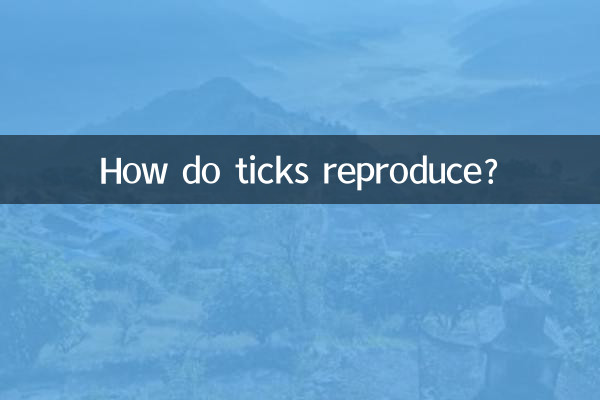How do ticks reproduce?
Recently, with the arrival of summer, tick-related health issues have once again become a hot topic on the Internet. Not only do ticks transmit a variety of diseases, but their reproduction methods have also attracted widespread attention. This article will introduce the reproduction process of ticks in detail, and combine it with the hot topics in the past 10 days to provide you with comprehensive popular science knowledge.
1. The basic process of tick reproduction

Tick reproduction is a complex and highly adaptive process that is usually divided into the following stages:
| stage | Description | duration |
|---|---|---|
| Mating | Male ticks attract females by releasing pheromones, and mating is usually completed on the host. | hours to days |
| lay eggs | After mating, female ticks leave their host and lay eggs in the soil or vegetation. Thousands of eggs can be laid at a time. | days to weeks |
| hatch | The eggs hatch under suitable temperature and humidity, and the larvae (six-legged nymphs) emerge. | 2 weeks to several months |
| nymphal stage | After sucking blood, the larvae metamorphose into eight-legged nymphs and continue to look for hosts to suck blood. | weeks to months |
| adult stage | The nymphs feed on blood again and then metamorphose into adults, completing the reproductive cycle. | months |
2. Environmental factors affecting tick reproduction
The reproductive efficiency of ticks is highly dependent on environmental conditions. The following are the hot environmental factors discussed throughout the Internet in the past 10 days:
| factors | influence | Recent hot topics |
|---|---|---|
| temperature | 20-30°C is the most suitable temperature for reproduction. High or low temperatures will inhibit reproduction. | High temperature warnings have been issued in many places, and tick activity has increased. |
| Humidity | Humidity above 70% is conducive to egg survival, while a dry environment will reduce hatchability. | The rainy season in the south triggers a surge in tick bite cases. |
| number of hosts | Ticks reproduce faster when mammals (e.g., rodents, deer) are abundant. | Wildlife protection policy and tick prevention and control controversies. |
3. Recent hot events related to ticks
Combined with the hot topics on the Internet in the past 10 days, the following are the tick-related contents that the public is most concerned about:
| Date | event | Discussion popularity |
|---|---|---|
| 2023-06-05 | Several children in a certain area were hospitalized after being bitten by ticks, causing parents to panic. | Top 10 hot searches on Weibo |
| 2023-06-08 | Experts remind: The tick infection rate in pet dogs has increased by 30% year-on-year. | Douyin views exceed 5 million |
| 2023-06-12 | Clinical trials of new tick repellent completed, 92% effective. | Zhihu hot list TOP5 |
4. How to prevent tick reproduction and bites
In view of the breeding characteristics of ticks, the following are comprehensive prevention and control measures recommended by the entire network:
1.Environmental governance:Clean up weeds and fallen leaves in your yard to reduce tick habitat.
2.Personal protection:Wear light-colored long clothes and pants when entering grassy areas, and use insect repellent containing DEET.
3.Pet management:Use tick repellent on pets regularly and check the ears, between the toes and other areas.
4.Prompt processing:When you find a tick bite, use tweezers to pull it out vertically to avoid squeezing the tick.
5. Latest research progress by experts
According to recent academic developments, the following breakthroughs have been made in tick reproduction research:
| research institute | discover | Application prospects |
|---|---|---|
| Institute of Entomology, Chinese Academy of Sciences | Key gene fragment that regulates tick egg laying discovered | It is expected to develop gene interference prevention and treatment technology |
| CDC laboratory | Tick saliva protein speeds wound healing | New hemostatic drugs are under development |
By understanding tick reproduction mechanisms and current hot spots, we can deal with this potentially dangerous creature more scientifically. It is recommended that the public continue to pay attention to the latest warning information issued by the health department and take personal protection.

check the details

check the details